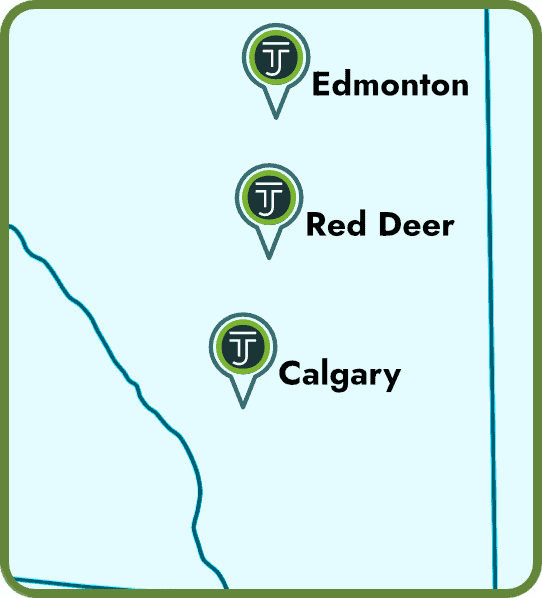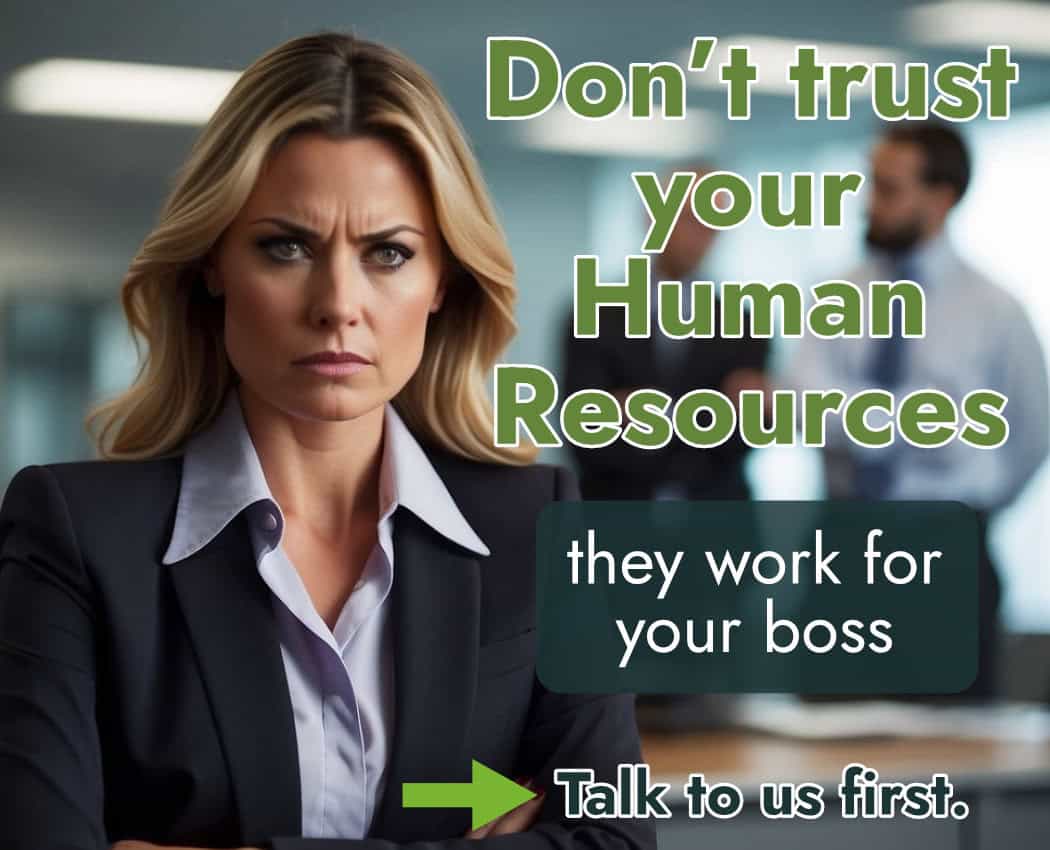
The Occupational Health and Safety Act (OHSA) requires that all organizations in Alberta provide a safe and respectful workplace.
Each employer needs a written policy outlining the steps they’ve taken to provide this and how the company meets acceptable standards. There should also be a complaints procedure outlining how an employee can make a complaint against the organization without fear of reprisal
A breach of the OHSA or the Alberta Human Rights Act could result in an employee making a complaint about discrimination or harassment in the workplace. This will be taken seriously by the Alberta courts.
Let’s take a closer look at what workplace discrimination, bullying and harassment are and what you can do about it if you witness it or experience it.
What are workplace discrimination and harassment?
Discrimination and harassment is an ongoing pattern of negative behaviour that targets a specific person or group of people. At best it’s disrespectful; at worst it’s threatening and constitutes bullying.
Some forms of discrimination and harassment are obvious, such as physical or verbal bullying but discrimination in the workplace often takes subtler forms that are far more difficult to identify.
It may involve the abuse of power or denying reasonable requests rather than any physical actions toward an employee.
Regardless of the type of discrimination and harassment in the workplace, it can result in feelings of humiliation, degradation, isolation, intimidation, and offence for an employee. So, it is important to be able to recognize what constitutes an illegal discriminatory act.
Examples include the following types of behaviour:
- Sexual jokes, innuendos or offensive gestures
- Sexual solicitation
- Offensive phone calls
- Threatening phone calls
- Belittling or undermining a person’s work
- Persistent teasing, pestering or insulting
- Blaming or scolding behaviour
- Spreading rumors and gossip about someone
- Yelling, screaming and threatening
- Deliberately excluding someone from social situations
- Interfering with personal belongings and invading personal space
- Making unreasonable demands like setting impossible deadlines
- Spying or stalking
- Hindering a person’s success at work or underserved punishments
- Downplaying achievements
- Intentionally providing wrong information
- Denying reasonable requests for training, leave or promotion
Sometimes, disgruntled employees feel discriminated against by an employer but the behaviour is not enough to progress a discrimination claim.
A tough manager or supervisor is not the same as a discriminatory one. Difficult decisions must often be made in the workplace and employees don’t always like them. However, the actions may not constitute harassment or discrimination.
Good examples include:
- Offering constructive criticism to improve performance at work
- Evaluating performance and providing feedback
- Respectfully disagreeing with an opinion on a matter
- Enforcing workplace policies and procedures
- Talking in private about potential disciplinary action
- Just-cause dismissal, suspension, demotion or punishment
- Denying unreasonable training, promotion or leave requests
How do you identify workplace harassment?
When there is a culture of discrimination in a workplace, it is easier to spot. However, as already mentioned, workplace harassment can be subtle and take place out of the view of others — but it is no less wrong because of that.
The type of behaviour that constitutes discrimination, bullying or harassment is extremely varied so it is difficult to make general statements. However, the standard used is whether most reasonable people would consider the behavior unacceptable.
Often, workplace harassment can be uncovered by:
- Private interviews and confidential surveys
- Recognition of a lack of motivation or apparent discontent in the workplace leading to a decline in performance
- Rising absenteeism or staff turnover
- Persistent rumours from multiple sources (often, there’s “no smoke without fire”)
What does Alberta law say about workplace bullying and harassment?
Employee rights and human rights are protected under Alberta’s legislation — though neither the Occupational Health and Safety Act nor the Alberta Human Rights Act refers directly to bullying and harassment.
THE OCCUPATIONAL HEALTH AND SAFETY ACT
Under the OHSA, employers in Alberta must have a health and safety policy and conduct a workplace risk assessment with employees and contractors. Any identified risks must be addressed.
Employers must implement a harassment prevention plan that is readily available to all workers for reference and conduct employee training on the policies and procedures it contains.
The workplace harassment prevention plan should cover the following areas:
- Reporting harassment
- Investigating harassment reports
- Documenting reports and investigations, and
- Informing about the outcome of harassment investigations
If harassment concerns are ever raised, they must be suitably investigated and addressed.
THE ALBERTA HUMAN RIGHTS ACT
The ALBERTA HUMAN RIGHTS ACT prohibits harassment and discrimination in the workplace based on gender, ethnicity, disability, age, religion, or marital status.
How to safely report discrimination or harassment in your workplace
If you experience or witness workplace discrimination or harassment, you might not know how or where to report it — even if you have undergone training in the system with your employer.
All Alberta employers must have a written policy that covers confidentially and safely reporting employee discrimination, bullying or harassment. You can probably find a copy of this from a trusted colleague.
However, the exact procedure you follow from there may depend on your industry. Many sectors in Alberta have different sets of policies and procedures to follow — especially if you work in professional services or another heavily regulated or licensed sector.
Regardless, keep in mind that everything regarding your complaint should be in writing. It’s best to keep a journal on the discriminatory behaviour from your employer with dates and details while they’re still fresh in your mind.
Your employer may have an in-house individual with whom you can talk confidentially. Sometimes, however, these individuals naturally side with the employer and attempt to downplay claims. If it goes to a hearing, this can be intimidating too.
That’s why an alternative course of action is to contact a discrimination lawyer. We will investigate your claim thoroughly and advise you on your legal rights. If you have a discrimination or harassment claim against your employer, we will outline the steps involved and handle all communications with your employer.
At Taylor Janis, LLP, we can protect your employee rights and support you in your discrimination or harassment claim.

We currently have three offices across Alberta — Edmonton, Calgary, and Red Deer. We serve the entire province of Alberta (and BC). We also have the infrastructure to work with any of our clients virtually — even the furthest regions of Alberta.
Call 1 (844) 224-0222 (toll free) to get routed to the best office for you or contact us online for general inquiries.
We also have a dedicated intake form to help you get the ball rolling. Our intake team will review your specific case and advise you on the next steps to take as well as what to expect moving forward.
Our offices are generally open 8:30 a.m.—4:30 p.m., Mon—Fri.


Whitney Manfro
WORKPLACE LAWYER
Whitney provides strategic counsel to employer and employee clients exclusively in the areas of employment law, human resources law, and human rights law. Over the course of her career, she has served national corporations, start-ups, senior executives, and individual employees across a broad range of industries.
The Legal Review Process by Taylor Janis Workplace Law
- Taylor Janis strives for high-quality, legally verified content.
- Content is meticulously researched and reviewed by our legal writers/proofers.
- Details are sourced from trusted legal sources like the Employment Standards Code.
- Each article is edited for accuracy, clarity, and relevance.
- If you find any incorrect information or discrepancies in legal facts, we kindly ask that you contact us with a correction to ensure accuracy.


